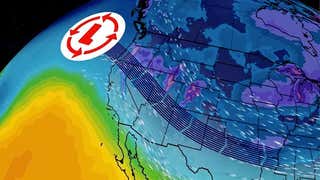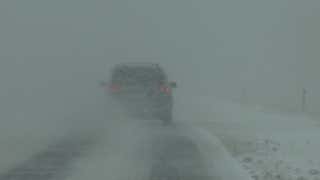

US
°C





A dead crab is seen in a piece of marsh ravaged by the effects of the BP oil spill on April 17, 2011, in Ocean Springs, Mississippi, a year after the devastating incident. The spill occurred after the Deepwater Horizon rig exploded on April 20, 2010, killing 11 workers and dumping millions of barrels of oil into the Gulf of Mexico.
Already known as the worst offshore oil spill in U.S. history, the 2010 BP Deepwater Horizon disaster was even more harmful than previously thought, according to a new study published in the Marine Pollution Bulletin.
The spill occurred after the Deepwater Horizon rig exploded on April 20, 2010, killing 11 workers and dumping millions of barrels of oil into the Gulf of Mexico over the course of 87 days. Scientists from NOAA and several private research companies discovered that oil was found along 1,313 miles out of 5,930 miles of surveyed shoreline after the spill, which is 19 percent more than previous estimates, according to the study.
Some of the oil was recovered, burned or dispersed at sea, but some also washed up onto the shorelines of southern states such as Louisiana, Alabama and Florida. A majority of the oiling appeared in Louisiana, with significant oiling shown in Mississippi, Alabama and Florida. Oiling also appeared in Texas, but to a lesser extent.
About 30 percent of oil thought to have been spilled has not yet been accounted for. Some researchers believe this “missing” oil actually coagulated and settled at the bottom of the Gulf of Mexico. So far, it has not been found.
(MORE: Study Claims More Than 700 Miles of Great Lakes Shoreline Vulnerable to Oil Spills)
In the study, the researchers found that oiled shoreline was almost evenly split between beaches, 46 percent, and coastal wetlands, 52 percent. They also discovered that oil has had a complicated relationship with the shoreline: some of it was removed or treated by cleanup crews, some deteriorated naturally or soaked into the soil, and some continues to sit on the surface of the water; drifting currents deposited even more oil after the initial spill.
Environmentalists argue that all the oil has had a lasting impact on the Gulf.
“While the disaster in the Gulf occurred six years ago, the impacts on dolphins, sea turtles, and many other species are still being felt today,” National Wildlife Federation (NWF) president and CEO Collin O’Mara said in a statement. “Now we must take the steps necessary to restore the Gulf.”
In late February, the Deepwater Horizon Oil Spill: Final Programmatic Damage Assessment and Restoration Plan was completed. The assessment is the result of a massive, six-year effort to understand the impacts of the spill and how to restore the Gulf, according to NWF.
The key findings of the report include:
Almost all of the populations of dolphins and whales in the oiled area were found to have demonstrable, quantifiable injuries.In the five years after the disaster, more than three-quarters of pregnant bottlenose dolphins in the oiled areas failed to give birth.Bottlenose dolphin populations in some places on the Mississippi and Louisiana coasts could ultimately decline by more than half.Nearly half of the rare Bryde’s whales in the Gulf were exposed to oil. As a result, the already-imperiled species could die out from the Gulf altogether.As many as 8.3 billion oysters were lost as a result of the oil spill and response effort.In 2010, the oil spill killed between two and five trillion larval fish.Significant numbers of threatened Gulf sturgeon were exposed to oil. Studies indicate that these exposed fish suffered immune system dysfunction and damage to their DNA.
Earlier this month, a federal judge in New Orleans signed off on the final approval for a $20 billion settlement over the 2010 oil spill. Thesettlement includes $5.5 billion in civil Clean Water Act penalties, along with billions more that will go to back environmental damage andother claims by the five Gulf Coast states and local authorities.
Paid over a period of 16 years, the settlement will cost BP as much as $20.8 billion, making it both the largest environmental settlement in U.S. history and largest civil statement with a single organization to date.
MORE ON WEATHER.COM:
Crews work to contain an oil spill from Bridger Pipeline's broken pipeline near Glendive, Mont. in this aerial view on Monday, Jan. 19, 2015. (AP Photo/The Billings Gazette, Larry Mayer)












